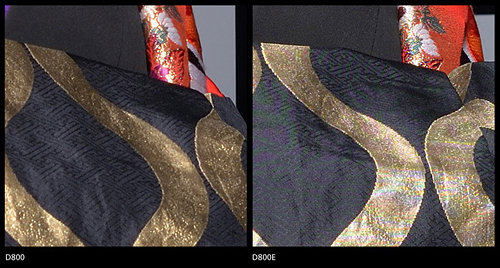
Nikon has just announced a new Pro DSLR that will sell like hotcakes among professional photographers. The Nikon D800 is a camera equipped with the highest photo resolution ever (in the DSLR category) of 36 MP. With a resolution that high, it’ll be a breeze for photographers to capture tiny details when shooting landscapes, fashion, still life, and any other types of photographs under the sun.
Key Features
– 36.3 megapixel full frame FX CMOS sensor
– ISO100-6400 (expandable to ISO50, ISO25600)
– 4fps continuous shooting
– 6fps continuous shooting in DX format at 15.4mp (with MB-D12)
– 51 focus points
– FX/5:4/1.2x/DX Image Formats
– EXPEED 3 processor
– AF at -2EV (Moonlight)
– Full HD 30/25/24fps Video
– Clean HDMI output, Mic/Headphone sockets
– ISO100-25600 available in video
– High-speed CF (UDMA 7) and SD (SDXC and UHS-1) dual card slots.
– 3.2inch screen, 921k dots (near sRGB colour)
– Optical viewfinder (same as D700)
– USB 3.0 – high speed for tethering
– Optional MB-D12 Battery pack
more info: Nikon D800 specs
Price (USA):
$2,999.95
($3,299.95, D800E)

The D800 is relatively small in size. Its size is even 10% smaller than that of the Nikon D700. That’s why the D800 will be more practical for travel. Its prize is also relatively cheap compared to other Nikon pro DLSRs like the Nikon D3 or D4.
Other upgrades in this model are the noticeably faster, more accurate auto focus and its face detection feature. The light metering system is also quite intelligent.
For those who own a lot of Nikon DX lenses, the Nikon D800 will automatically crop resulting photos and it will record at the resolution of 15 MP. Still a pretty high resolution, I’d say.
But the Nikon D800 doesn’t come without flaws. In the speed area, the D800 can only record at a maximum speed of 4 photos per second. This is considerably slower than the 8-11 photos per second speed of the D700 or D4. That’s why the D800 is less suitable for action photography (such as sports).

The D800 is released in two versions. There is a Nikon D800 version that has an AA filter much like other DSLRs. Then there’s the Nikon D800E; which is a version without a filter. With the filter removed, the Nikon D800E can produce much sharper and detailed photos. But this sans filter version is more prone to moiré and miscoloring. The D800E is designed especially for landscape photographers and seasoned photographers, especially those experienced in digital editing.
In principal, the D800 and D800E have the same specifications. It can even be said that they’re identically similar.
The only difference lies in the existence of the anti-aliasing filter.
D800: Equipped with an anti-aliasing filter
D800E: No anti-aliasing filter
Anti-Aliasing Filter
An anti-aliasing filter is a filter used to remove or reduce the moiré effects that appear. How it works is, the filter blurs the light received at certain levels. Moiré is the appearance of a color phenomenon that’s similar to a purple fringe (chromatic aberration) and a rainbow; which usually occurs in objects with repetitive patterns. These generally occur in weaves, fabric, range of dots in a plane, screens, and other surfaces like that. These colors don’t seem natural to the human eye and is often generally considered a nuisance in a photograph. That’s why almost all camera manufacturers equip their standard cameras with these filters. Because these filters blur light received at certain levels, they in turn reduce the sharpness of a resulting image.

And because the D800E isn’t equipped with these filters, the opposite occurs. It produces relatively sharper images, but the moiré effect will appear. This high sharpness in photographs is often used in landscape photography.
This moiré effect can be removed or reduced with post-processing software. The levels of elimination depend on the photographer. That’s why Nikon provides a post-processing software bundled into the D800E package


(Image courtesy of Nikon)
Conclusion:
The D800 is more suitable for fashion, studio, architecture, and birding photography.
The D800E is more suitable for landscape and macro photography, where an extremely high level of sharpness is needed.
Moreover, unlike the D700 that doesn’t have any video features, the D800 is equipped with a full High Definition resolution (Full HD) video feature.
At 1080p, the D800 can record in frame rates of 30, 24, and 25p. While at 720 p, the frame rate can reach up to 50 to 60p, great for recording slow motion.
To introduce the features of this product to the public, Nikon created a short 6-minute film titled “Joy Ride.”
This short film records a motorcycle accelerating at high speeds. Nikon collaborated with photographer and videographer Sandro Miller in creating this short film.
Here it is, “Joy Ride” by Sandro Miller with Nikon D800:
Joy Ride – Behind the Scenes from Sandro on Vimeo.
















